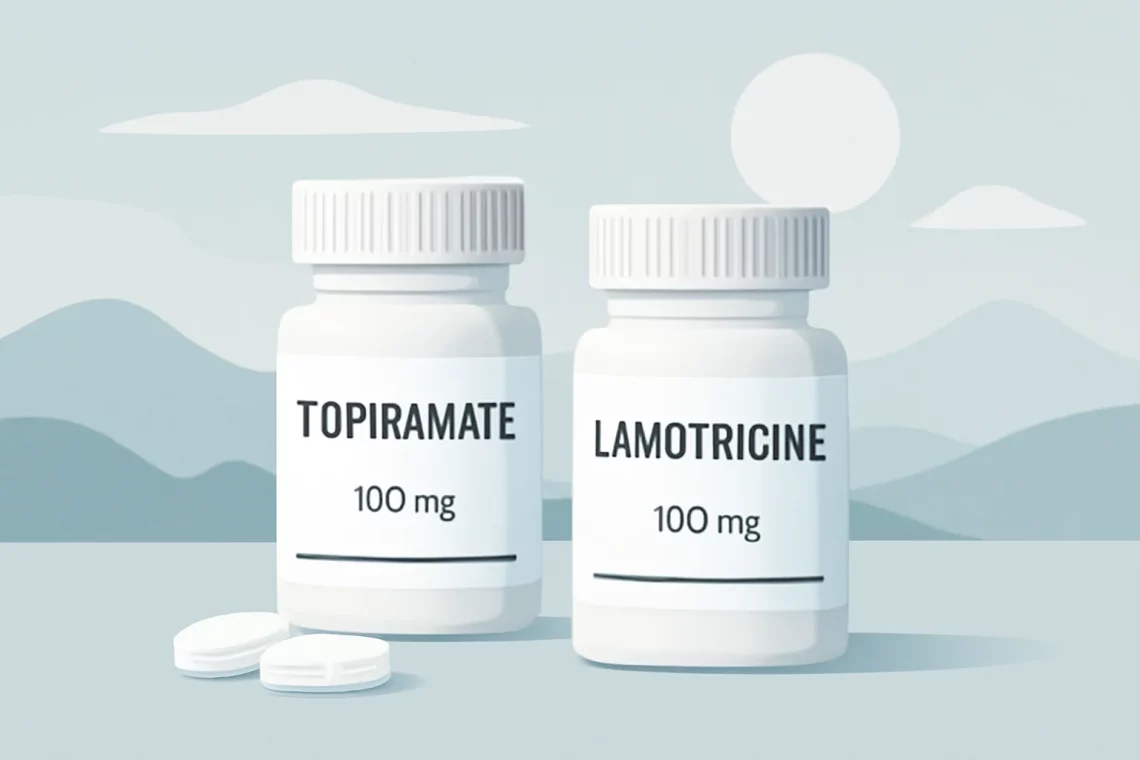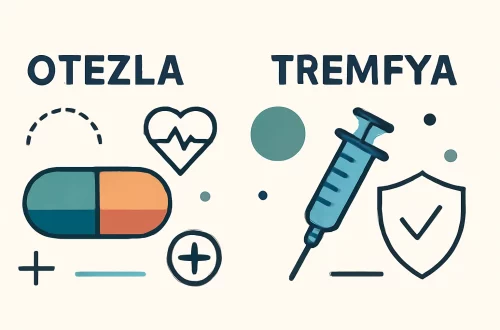
Topiramate vs Lamotrigine: Which Medication Is Right for You?
Topiramate and lamotrigine are two medications commonly prescribed for the treatment of various neurological and psychiatric conditions, particularly epilepsy and bipolar disorder. Both of these drugs have gained recognition for their effectiveness in managing symptoms, but they differ significantly in their mechanisms of action, side effects, and therapeutic uses. Understanding these differences is crucial for patients and healthcare providers when deciding on the most appropriate treatment plan.
Topiramate, marketed under various brand names, is primarily used as an anticonvulsant and is also prescribed for migraine prevention. It works by stabilizing electrical activity in the brain, thereby reducing the frequency of seizures and migraine attacks. On the other hand, lamotrigine is another anticonvulsant that is also effective in treating mood disorders, particularly bipolar disorder. It is known for its role in mood stabilization and has a unique mechanism that helps in modulating glutamate release, which plays a critical role in mood regulation.
Navigating the complexities of these medications requires a thorough understanding of their distinct properties, potential side effects, and interactions with other treatments. As we delve deeper into the specifics of topiramate and lamotrigine, we will explore their uses, how they work, and the considerations that come into play when choosing one over the other.
Mechanisms of Action
Topiramate and lamotrigine exhibit different mechanisms of action that contribute to their effectiveness in treating various conditions. Topiramate primarily acts on sodium channels in the brain, stabilizing neuronal membranes and reducing the excitability of neurons. This action is crucial in preventing the abnormal electrical activity associated with seizures and migraines. Additionally, topiramate enhances the activity of gamma-aminobutyric acid (GABA), an inhibitory neurotransmitter, further contributing to its anticonvulsant properties.
In contrast, lamotrigine works by inhibiting the release of glutamate, an excitatory neurotransmitter that can trigger seizures and mood episodes. By modulating glutamate levels, lamotrigine helps in stabilizing mood and preventing the extreme highs and lows associated with bipolar disorder. Moreover, lamotrigine’s action on sodium channels also plays a role in its anticonvulsant effects, making it effective for individuals with epilepsy.
Understanding these mechanisms is essential for healthcare providers when prescribing these medications. The choice between topiramate and lamotrigine may depend on the specific condition being treated, the patient’s medical history, and their response to previous treatments. For instance, a patient with epilepsy may benefit more from topiramate if their seizures are resistant to other medications, while a patient with bipolar disorder may find lamotrigine more effective for mood stabilization.
The efficacy of these medications can also be influenced by individual factors such as genetics, age, and concurrent medical conditions. Therefore, it is crucial for healthcare professionals to assess each patient’s unique circumstances to determine the most appropriate treatment option.
Side Effects and Considerations
Both topiramate and lamotrigine come with their own set of potential side effects, which can influence a patient’s treatment journey. Topiramate may cause cognitive side effects such as difficulties with concentration, memory issues, and a phenomenon known as “word-finding difficulties.” Other common side effects include fatigue, dizziness, and weight loss. While weight loss may be seen as a benefit by some patients, it can be a concern for others, especially those with eating disorders or those who are underweight.
In contrast, lamotrigine is generally well-tolerated, but it does carry the risk of skin rashes, some of which can be severe and lead to life-threatening conditions such as Stevens-Johnson syndrome. Other side effects may include dizziness, headache, and nausea. Patients on lamotrigine need careful monitoring, especially when the dosage is increased, to mitigate the risk of rash development.
When considering either medication, it’s crucial for patients to discuss their full medical history with their healthcare provider. Certain conditions, such as kidney disease or liver problems, may complicate the use of these drugs or require dosage adjustments. Moreover, both medications can interact with other drugs, potentially altering their effectiveness or increasing the risk of adverse effects.
Ultimately, the decision to use topiramate or lamotrigine should be based on a thorough evaluation of the benefits versus the risks, taking into account the patient’s specific health needs and personal preferences. Regular follow-ups and open communication with healthcare providers are essential to monitor the efficacy and safety of the chosen medication.
Comparative Effectiveness
When evaluating the effectiveness of topiramate and lamotrigine, it is important to consider the specific conditions being treated. For epilepsy, both medications have demonstrated efficacy, but the choice may depend on the type of seizures. Topiramate is often preferred for certain types of epilepsy due to its broad spectrum of activity, including partial-onset seizures and generalized seizures. Clinical studies have established its effectiveness in reducing seizure frequency, making it a go-to option for many neurologists.
On the other hand, lamotrigine has shown particular effectiveness in treating specific seizure types, including Lennox-Gastaut syndrome, a severe form of epilepsy that begins in childhood. Its mood-stabilizing properties also make it a suitable choice for patients with comorbid mood disorders, which is often the case in individuals with epilepsy.
For bipolar disorder, lamotrigine is widely recognized for its role in preventing depressive episodes, which is a significant concern for many patients. Research has indicated that lamotrigine is more effective than placebo in maintaining mood stability, especially in the long term. Topiramate, while it may have some mood-stabilizing effects, is not typically the first-line treatment for bipolar disorder and is usually reserved for cases where other treatments have failed.
The comparative effectiveness of these medications can also be influenced by individual patient factors, such as previous treatment responses and the presence of comorbid conditions. It is essential for patients to work closely with their healthcare providers to determine which medication is most appropriate for their unique situation.
In conclusion, topiramate and lamotrigine are both valuable medications in the management of epilepsy and mood disorders. Their distinct mechanisms of action, side effects, and effectiveness for specific conditions highlight the importance of personalized treatment plans. Patients should engage in open discussions with their healthcare providers to make informed decisions about their treatment options.
**Disclaimer:** This article is not intended as medical advice. For any health concerns or questions about medications, please consult a qualified healthcare professional.




